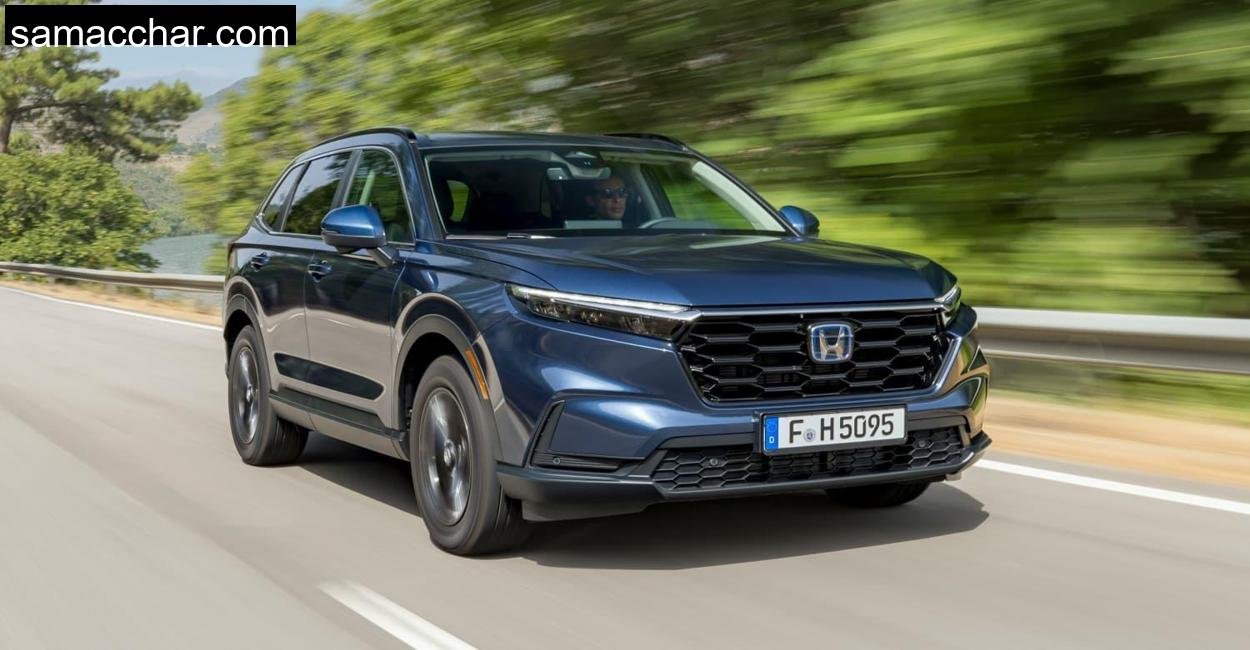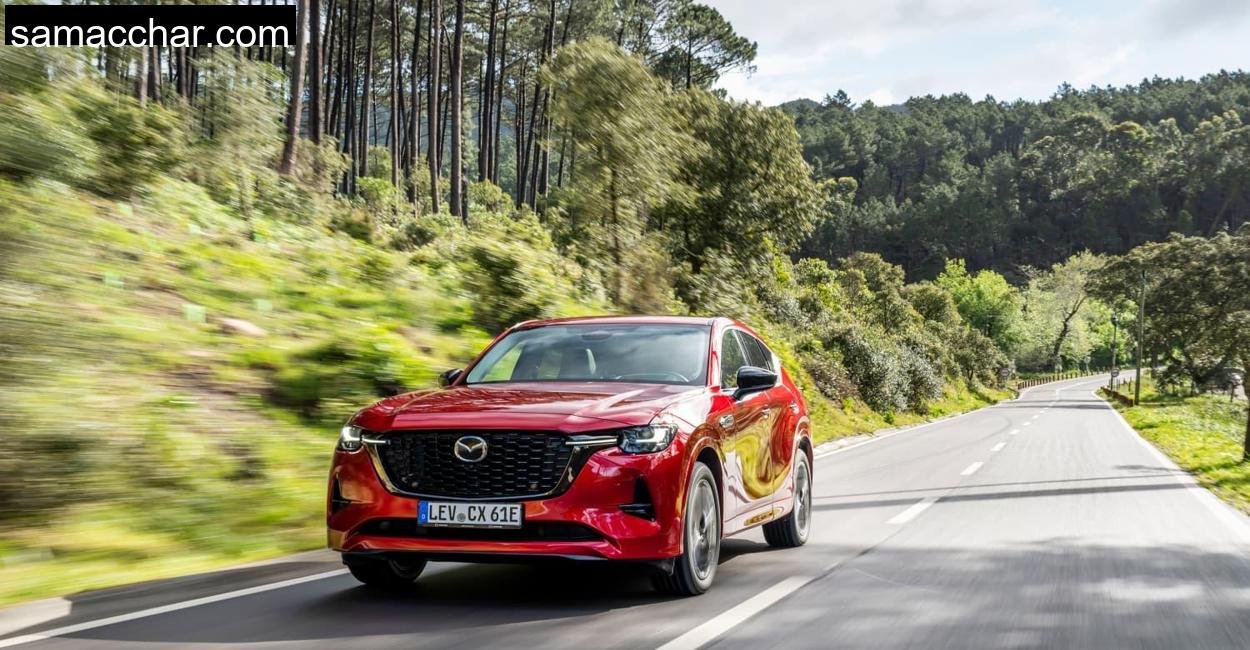Honda CR-V: Imaginative drivetrain
At first glance, the CR-V looks conservative. A clean silhouette, upright stance, and subtle creases suggest it won’t turn heads. But underneath that reserved body lies a clever twist: the full hybrid drivetrain is essentially upside-down from what you’d expect.
Where most hybrids rely on a combustion engine doing the heavy lifting with electric support, Honda flips that. In the CR-V, it’s the electric motor with 135 kW (184 hp) that does the real driving work. The combustion engine? A quiet, competent generator supplying energy to keep the battery topped up and the wheels rolling.
This isn’t new in theory, but in practice it feels revolutionary, especially when cruising silently through Muskau’s sandy trails, letting the motor do its work while the engine hums in the background like a powerplant behind the scenes.
How does hybrid driving work?
Here’s the reality: the CR-V works in three distinct modes, but you don’t have to think about them. In town, it acts like a pure EV. I eased through the historic avenues of Bad Muskau on electric power alone, not a murmur from under the hood.
As I left the town and rolled into forest roads, the combustion engine kicked in to generate energy. It wasn’t as seamless as I had hoped, at higher loads, the engine can sound coarse, even rally-car loud when you press on too hard. But once I settled into a steady rhythm and let the car do its thing, the drive was effortless.
On fast country stretches, the engine and motor work in unison, but again, Honda wants you to forget about what’s happening. Just drive. It’s this kind of intuitive powertrain behavior that sets the CR-V apart.
The CR-V is a comfortable type
Comfort is where this SUV really excels. The steering is a little vague and not made for canyon carving, but that’s not the point. On the long gravel paths of the Muskau Heath, the CR-V felt composed and refined. The suspension soaked up broken pavement and the occasional pothole with quiet dignity.
It’s not overly soft, though. At speed on the Autobahn later that day, it remained impressively stable. Wind and road noise are kept to a minimum, and even after hours behind the wheel, I arrived at my overnight stay without fatigue. This is a car designed to glide through your day, not to dominate it.
Ecotest: Hybrid no fuel-saving miracle
I didn’t expect miracles, and the CR-V didn’t try to deliver one. The real-world consumption during my trip hovered around 7.4 liters per 100 km, almost exactly what recorded. That’s reasonable for a 4.7-meter-long SUV with all-wheel drive.
Where the hybrid system shines is in town: under 6 liters per 100 km is achievable without effort. But once you get onto the highway or start climbing hills, the hybrid gains diminish. Still, emissions were low and pollution control was excellent. Honda knows how to tune an engine, and the CR-V proved clean even when pushed.
Plug-in hybrid available for the first time
The plug-in version is a game changer. With a 17.7 kWh battery, Honda claims 82 km of electric range. During a second loop through the Heath, I managed just under 70 km before the engine had to assist.
That drive was near-silent and calm, the kind of experience that makes you question whether we even need combustion anymore. Recharging took about two and a half hours using a standard AC wallbox, which made overnight top-ups simple.
When the battery is low, the car reverts to the full hybrid setup. And here, again, Honda’s work shows: the transition between modes was smoother than in the standard hybrid and noise levels dropped noticeably.
Very good space conditions
The CR-V might not look enormous, but inside, it’s a small lounge on wheels. Rear legroom is outstanding, I had two adult passengers on one leg of the drive who commented more than once on the comfort.
The boot holds 565 liters in standard trim and expands beyond 1000 liters when you fold down the back seats. I managed to fit my bike inside diagonally with one wheel off, a feat that usually requires a larger van.
Even the loading lip is reasonable for an SUV. Honda clearly had family life, outdoor activities, and long road trips in mind when they designed this cabin.
Strong assistance systems for the base
Safety is another CR-V strength. Even the base “Elegance” trim comes packed with features: lane keeping, blind spot monitoring, rear traffic alert, and even a front camera with a wide-angle view.
Driving through towns in the Muskau region, the 360-degree system saved me more than once from bumping a low wall or missing a cyclist in the mirror. It’s not perfect, the overly cautious speed limit warning system beeped far too often, but overall, I felt in good hands.
Price
Good things rarely come cheap. The CR-V starts at €49,600 and rises to €55,700 for the tested AWD version. That’s not bargain territory, especially when rivals like the Mazda CX-5 or Nissan X-Trail offer competitive features for less.
However, when you consider the build quality, drivetrain sophistication, and sheer comfort, there is value here. You just have to want what Honda is offering: a calm, refined, efficient alternative to the usual suspects.
Conclusion
The new Honda CR-V Hybrid is a mature, thoughtful SUV that doesn’t try to shout. It doesn’t make promises it can’t keep. Instead, it offers a unique driving experience led by electric motivation, real-world comfort, generous space, and solid safety.
Driving it through the Muskau Heath showed me what kind of car this really is: one for families, commuters, and nature explorers alike. It’s not the flashiest, not the fastest, and not the cheapest. But it does its job with integrity. And sometimes, that’s exactly what you need.










